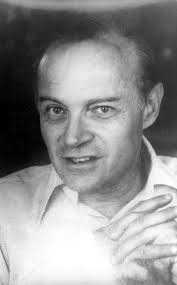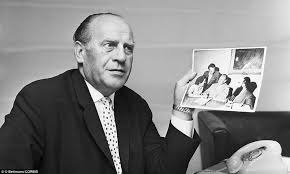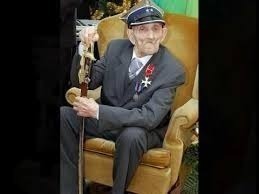Tributes
Leave a tributeLeave a Tribute
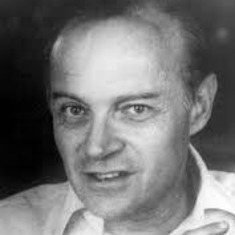
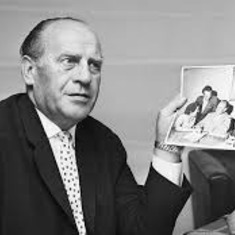
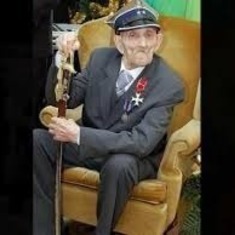
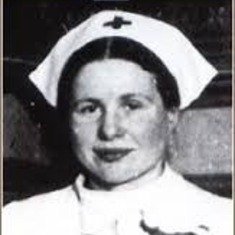

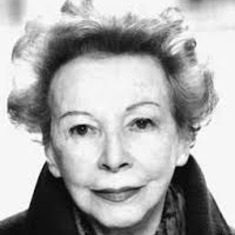
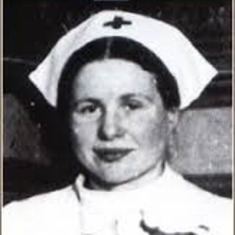
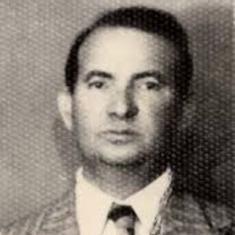
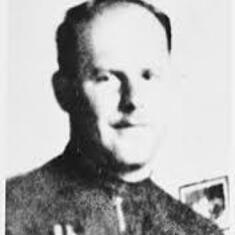
Holocaust survivor story of Dan Pagis
I’ve long felt that one of the most immediate of the numerous challenges confronting me as a relatively new teacher in the Holocaust Studies classroom is the question of the students’ role.[1] Perhaps excepting the few students who will be initially attracted to this grim subject for the voyeuristic journey into human suffering, most students will want to immediately consider some form of moral situatedness in relation to the grim narratives of atrocity that are intrinsic to such courses. And, even in the event of the former, I have often been deeply moved to see that students can be startled—in the course’s very first day—into glimpsing a new paradigm of readership, gaining insight into participating in an ethical role that can be described as ethical witnessing for the witness, or readerly agency, particularly after a close encounter with the lyrics of Dan Pagis.
First, a little background. Often considered alongside Aharon Appelfeld and Paul Celan, Dan Pagis (1930-1986) is representative of a unique generation of post-Holocaust writers who were born in the polyglot and culturally rich environment of the Bukovina area of Romania (formerly Austria, now the Ukraine). Born in 1930, Pagis had already experienced severe disorientation and loss even before the Holocaust, first with the emigration of his father to Palestine in 1934, then the early death of his mother not long after, culminating in his deportation at the age of eleven. Years later it emerged that, after his mother’s death, the family in Bukovina were convinced that the widower in Palestine would be unable to support the child. Unable to find foreign haven—unlike Appelfeld and Celan who were fortunate enough to escape the camps—Pagis was incarcerated by the Nazis for three years. He never learned the fate of his grandparents. After spending his early adolescence in concentration camps in Transnistria, Pagis reached Palestine in 1946 where he was reunited with his father (though reportedly years of estrangement followed into adult life) and taught school on a kibbutz. Eventually, Pagis began to write and publish poems in Hebrew, closely mentored by the poet Leah Goldberg (1911-70). Whereas it has often been argued that Paul Celan remained committed to an enigmatic language of his own making, perhaps unsure until his eventual suicide of its destination or audience, Pagis had to cope with the challenge of addressing a clearly defined audience of Israelis who, though engaged in a collective act of repatriation, were perhaps somewhat ambivalent in their response to the presence of Holocaust survivors. And yet by the end of his life, he enjoyed literary celebrity as one of Israel’s most popular poets, whose radical skepticism reconnected the Israeli imagination to the ever-disruptive past. Pagis died in Jerusalem in 1986. Precisely because he avoided both conventional forms of commemoration as well as the archetypal role of witness embodied by Elie Wiesel (and never spoke for Israel in the widely popular and officially recognized ways that Yehudah Amichai did), Pagis’s poetry, as Sidra DeKoven Ezrahi, one of Pagis´s most attentive and eloquent readers, argues, “blast[s] a hole in the culture so large that it exposes and undermines its deepest structures [to] claim a radical public presence”(“Variable Directions Book Review,”37). Like Ezrahi, my students and I have gradually awakened to the disturbing awareness that his poetry denies the consolations of conventional narratives of finding security after catastrophe, not least in its radical unease over any safe definition of homeland. As I will explain shortly, in this and other ways, Pagis utterly disrupts the reader’s own world.
I like to teach with Lawrence Langer’s Art from the Ashes: A Holocaust Anthology (Oxford), particularly for its scope and attention to the various ways that genre contributes to the students’ encounter with narratives of trauma. Langer’s anthology encompasses excerpts from ghetto diaries, essays by Levi and Wiesel, short fiction by Ida Fink and many others, novels and novellas by Sobol and Appelfeld, and even haunting reproductions of art created in Terezin. But I am most impressed by the space alloted to the often neglected testimony of poetry, especially the judicious gleanings from Abraham Sutzkever, Paul Celan, Miklós Radnóti, and Nelly Sachs. An additional strength of the anthology is Langer’s sober-minded attention to the demands that each genre makes on its grim subject matter. Teachers who may be somewhat ill at ease in approaching this material for the first time couldn’t hope for a better guide, particularly in Langer’s cautionary approach to the relation between poetry and trauma: “Holocaust poetry should not be mistaken for a renewal of the spirit or used as a reason for redressing the cruelty of the doom it reflects. Its true legacy is a tribute to the resilience of language and the ability of the artistic imagination to meet a chaoric challenge and with sheer inventive skill change it into durable, if often difficult and unfamiliar poetic forms”(Art From the Ashes 559). In this regard I should add here that I am especially drawn to the collection because it happens to contain the best representation of Pagis’s shorter lyrics currently available in any Holocaust anthology and Langer’s illuminating introductions to each poet provide students with engaging and informative contexts. Though the Pagis selection appears toward the latter half of the weighty volume, it is here that my class always begins.
I have been thinking about the profound pedagogical potential that Dan Pagis’s lines can offer the literature classroom ever since first encountering Sara Harowitz’s explication of the poem in a Holocaust Educational Foundation workshop where we wrestled with much the same existential questions that the poem continues to raise for my students. I remain inspired by her rigorous questioning on that ocassion, and so, almost invariably, I like to begin the first or second day of class with Dan Pagis’s famous poem of incomplete witnessing, “Written in Pencil in the Sealed Railway-Car” (“Katuv b’iparon bakaron hehatum”) where humanity’s sense of progress is undermined as the ominous beginnings of human community glares through present history like a murderous palimpsest:[2]
here in this carload
i am eve
with abel my son
if you see my other son
cain son of man
tell him that i
There are few works of art that so successfully crystallize the problem of testimony, commemoration, and conscience; no reader escapes its call for their involvement. Since at times, the only concrete connections in Pagis’ work are those that the individual reader creates, I like to begin by allowing students to approach it from the grounds of their own unfamiliarity, in meditative isolation. Then, following that quiet first reading, I provide classroom time for collaborating on an explication in small groups (to encourage those who are inhibited); finally I draw from those responses in the framework of a large class discussion. Not only does this strategy encourage students to provide a direct, interpretive role (certainly an empowering paradigm for any lower-division literature classroom to embrace), but the experience, so powerfully divested of formulaic resolution—insures that as a community of readers we have a powerful touchstone for experiencing the shocks of subsequent texts without anticipating consolatory conventions.
Students are naturally confused about what they are supposed to “get” out of the bad news that the Holocaust poem, memoir, witness account, or fictional narrative invariably delivers. Certainly I have occupied their position (and continue to do so at troubling moments). Often nearly traumatized by the bleak material they confront, they reasonably assume that they are expected to somehow wrest meaning from atrocity. Some students (particularly those students influenced by Christian traditions) expect some form of spiritual consolation from the text—that the witness, especially the victim, will offer them a redemptive message that otherwise soothes, strengthens or redeems their own moment in history.
In contrast to such expectations, Pagis´s poem, blending the formal Hebrew of antiquity with the colloquial moment of the poem’s composition, rightly puts the burden of meaning on the reader who is not merely liberated to make her or his own sense of the text’s message, but compelled to do so by the way the poet situates his unknown audience. Recently I have come to realize that one of my more difficult goals in the Holocaust literature course is that my students will grapple with creating their own version of Kaja Silverman’s unsettling insistence that “If to remember is to provide the disembodied ‘wound’ with a psychic residence, than to remember other people’s memories is to be wounded by their wounds”(Threshold 189). To begin a process that might lead to such a revelation about the unexpected forms of such commemoration, I ask my students to discuss three simple questions that the poem raises (and it is always gratifying to learn from their responses): who is the speaker in this poem?; who is being addressed?; and most challenging, what is the message? And as mentioned above, it seems to me important that, rather than immediately address this as a class, students work on these questions in small groups, where their ignorance of the poem’s context, or my intentions, will not inhibit discussion.
Students immediately have to contend with the disturbing notion that someone else’s utterance (often long dead) has made a distinct claim on them as otherwise autonomous beings. In this regard my pedagogy embraces the uses that Emily Miller Budick makes of Stanley Cavell’s unique invocation of acknowledgment, a trope that addresses “the doubt of skepticism that argues we cannot ´know´ the world and other people in it. Rather than dismiss the skeptic’s worry as either perverse or not fully intended…Cavell [grants] the skeptic’s insight that we cannot attain knowledge as certainty…According to Cavell, when we say, for example, that we ‘know’ another person’s pain we do not mean that we ‘know’ it as a certainty. Instead we mean that we understand and respond to a claim made on us by that individual’s expression of that pain.” In this interpretive mode, teachers of indeterminate works like “Written in Pencil”—will appreciate Budick’s striking assertion that denial of “this kind would be to refuse to acknowledge that pain...not the legitimate expression of one’s skepticism but what Cavell calls ‘disowning’ knowledge” (“Acknowledging the Holocaust” 329). In my experience teaching the “Literature of the Holocaust,” primarily to non-Jewish undergraduate students, no other text so readily rewards their perception that the true work that awaits them is to respond to the course as if implicated. Not at all of course, in the sense of a counterproductive “guilt,” but rather as bearing the moral burden of the broken transmission of millions, of striving to form an ethical relation to fragmented texts and broken lives. And the title’s discomfiting reference to a “sealed railway-car” often stirs students to raise appropriate questions about the culpability of “onlookers” and “bystanders” who experienced the quotidian phenomenon of trains carrying men, women, and children to their deaths in the European countryside.
Pagis’s poem is also a useful introduction to a genre often neglected in Holocaust courses. More than prose narratives, particularly Holocaust memoirs, the lyrics of numerous survivor poets discourages the reader from dismissing the Holocaust as “past,” but instead underscores the present, both temporally and spatially. Thinking about Pagis’s searing lyric, I have found Amir Eshel’s reading of Benjamin’s angel, bearing on the particular challenge of Holocaust poetics, to be a most instructive paradigm for students as they continue to evaluate their own orientation toward the Holocaust as “past” event:
Just as Walter Benjamin’s angel is “propelled” into the future while his present sight is focused on the “pile of debris,” the past portrayed in this poetry is evoked from the perspective of poetic presence. Analogous to Benjamin’s notion that the angel’s spatial and temporal viewpoint (“His face is turned toward the past”) reflects the core of Jewish remembrance (Eingedenken), the temporal dimension inscribed in this poetry can best be described as facing the Shoah...these particular “piles of debris” that can never be eradicated. (“Eternal Present” 143)
Hence, as students come to realize, in its sheer fragmentariness it is difficult to think of this poem as a “work” or a “text.” Instead, invoking “here,” it is a place they are urgently summoned to. In their own terms and language, students confront a “script” that dissolves “the temporal and spatial distinction between ‘inside’ and ‘outside,’ between those who are part of the events and those who ‘just’ read about them from the safe distance and comfort usually associated with reading poetry and indulging in aesthetic pleasure” (Eshel 148). Or in other words, the burden of “freedom” in this post-Auschwitz universe means being exposed to this closed space of exile. In my own experience, by the time they return to reexamine the text at the end of the course, students often discover that they have grown to appreciate Pagis´s incomparable genius for conveying horror through sheer allusion, without shrillness or hysteria.
Over years of reading this poem, I have also acquired a respect for Pagis’s stoic refusal to succumb to conventional constructions of the child as the quintessential emblem of vulnerability and innocence, a trope that has often generated trivialization and oversaturation of the Holocaust, in ways that, as Geoffrey Hartman warns, can gradually etherize our responses. The lost children of the poem certainly do not invite the easy empathy with Anne Frank or other manifestly familiar images of vulnerability such as the well-known photograph of the Warsaw ghetto child in a peaked cap and upraised hands joining other Jews herded by German soldiers with automatic pistols. Instead, the missing child invoked here is Cain; both “son of Adam” and ben adam, a 20th century human being fully capable of unleashing atrocity. Some point after the students’ first raw foray into the text, teachers will find it useful to draw their attention to the fact that, besides being the son of Adam, the Hebrew phrase denotes a human- or more literally “earth-being.” Though the immediacy of that powerful syntactical feature is lost a bit in translation, few students will miss the way that, in its symbolic reference to the first family of humanity (which chillingly collapses the distance between the first human murder and the worst atrocities of our own age), the poem eloquently refutes our desire to take comfort in a linear notion of civilization’s progress. Though poignantly calling out to resolve the exigency of their ephemerality (“Written in Pencil”), these lines etch themselves indelibly on the students’ conscience.
Readers invariably awaken to the poem’s moral challenge to them, as a text that presupposes a community of readers who will struggle to complete its “failure” of transmission. After they have become acquainted with the English version in their own terms, it is worth alerting students to a critical translation problem. John Felstiner is representative of a number of critics who have cogently noted that in English “the plural addressee of Pagis’s tagidulo gets lost: ‘tell [ye] him.’” Students need to be made to understand that a crucial translation problem arises here since, unlike translators and poets like Felstiner, most will not be immediately aware that our English “you” was originally used nominatively as the plural of “Thou.” Under the rules of contemporary usage, the translator’s English can no longer inflect the verb to show that “Eve has something to tell a great many people, even unto the present generation, about her son’s murder.” Felstiner and other readers of the Hebrew original are well aware that, in Pagis’s intertextual imagination, the “you” addressed is the second person plural, “im tiru…tagidu” forming an imperative which demands the moral participation of both male and female witnesses. Felstiner is observantly discomfited by the translation of the poem’s silence: “Does the silence cutting short her last words tagidulo sh’ani, do our questions suspended in that silence after ‘tell him that I,’ resound the same in English as in Hebrew?” (“Jews Translating Jews” 344).
Still, whether read in English or the original Hebrew, this profoundly incomplete poem requires the intervention of a reader, who has been ethically summoned to respond linguistically. As Ezrahi memorably remarks, “ lack of closure here is the absolute refusal of art as triumph over mortality” (Booking Passage 162). The poem disrupts too easy a resolution of the absences it commemorates. In this regard, it may be useful to raise issues of public memory and commemorative space for the students’ consideration. For example, some students may find it is fitting that Pagis´s lines, composing one of the shortest lyrics in the modern Hebrew language, were carved onto an actual transport car of a train that has been made a part of the Transport Memorial at Yad Vashem (1995), Israel’s national memorial to the Holocaust, to serve as a textual meditation on the foreboding surface on which they are inscribed. But for others (particularly in the wake of the Israeli response to Palestinian aspirations) it will be clear, as it is to me, that Pagis´s disturbing paean to deathly silence can not be easily confined within the monological thrust of national or officially-sanctioned commemorative narratives, and indeed transcend any efforts to contain them. For all readers, it may be worth pondering Ezrahi’s sense of the manifest capacity of these lines to remain “disruptive, unassimiliable, even after being ‘safely’ embedded in commemorative public space reflects the poem’s resistance to the sanctities and proprieties of ritualized speech” (Booking Passage 162).
Here I should only add that not only is Pagis’s poem a powerful work to begin a course with; it can perform a very special role at the very end, as a sort of textual touchstone, at least for some approaches. Invariably most syllabi I have seen ensure that students will encounter all sorts of narratives; prose, poetry, memoir, and fiction. Often, the cumulative effect of encountering these various forms of the testimonial and witnessing process that is intrinsic to such courses, is to make students more aware of the roles of resilience and adaptation in the writer’s act of self-representation. As Shoshana Felman has rightly noted, survivor narratives often stir the Holocaust classroom with the liberating “rebirth to speech...the very eloquence of life, with ‘striking, vivid’ examples “of the liberating vital function of testimony”(Testimony 416). For at the very least, Pagis’s six lines deprive us of such consolation, returning us to the shadowy silences of the dead, for whom no one can speak. Rather than a triumphal sense of having worked through and overcome loss, the poem paradoxically insists on its own atrocity as an event still to be communicated, still trapped in speechlessness. As a reminder of unspeakability, Pagis haunts us with a Holocaust that remains an event without a witness or narrator, which depends on each subsequent reader’s struggle—to witness and narrate. Students who may have confronted their own loss of language, their startling discovery of the inadequacy of the university-trained intellect, while confronting the wounding texts of Holocaust courses will understand that the polarities of both paradigms are intrinsic to the narratives of atrocity and endurance they have witnessed.
Holocaust survivor Oskar Schindler
In Canada, a woman can have an abortion without fear of prosecution or imprisonment - for the simple reason that there is no abortion law. For more than 20 years, that state of affairs has set us apart from the rest of the developed world. Canadian women enjoy the right to safe and legal abortions largely because Henry Morgentaler fought a long battle on their behalf.
For his trouble, the unflappable Dr. Morgentaler stood trial, languished in prison and received numerous death threats. What drove him to take such risks? "The realization that a terrible injustice was being done to women and the conviction that it was necessary to change the situation to provide help for those who needed it," replies the retired physician via email.
Anyone who didn't live through the 1960s and '70s may find it hard to imagine the legal and moral strictures that once dictated abortion policy in this country. Dr. Morgentaler, 87, isn't shy about taking credit for making Canadians realize that back-alley surgeries are hardly the hallmark of a civilized society.
"On the issue of abortion, I see myself as a leader," he says. "The women of Canada, who lobbied relentlessly and supported me not only emotionally but also through campaigns and fundraising for my trials, deserve a lot of credit as well."
Born and raised in Łódź, Poland, Dr. Morgentaler is a survivor who has suffered great injustice himself. After the invading Nazis killed his father, a member of Poland's Jewish socialist party, he was imprisoned at Auschwitz and other concentration camps near the end of the Second World War. Dr. Morgentaler and his wife later immigrated to Montreal, where he earned his medical degree.
"My experience during the Holocaust showed me the depth of depravity that human beings can become involved in," he says. "It made me, more than ever, conscious of the inherent evil that human beings can descend to, and that it is our duty not to ever allow this to happen."
Before he joined the abortion fight, Dr. Morgentaler spent two decades as a general practitioner. Then in the late 1960s, he joined the call to change Canada's existing abortion law and began performing abortions at a private clinic in Montreal. After the Trudeau government loosened the law in 1969 to permit abortions - but only if approved by hospital committees - Dr. Morgentaler remained openly defiant.
Although several juries acquitted him of performing illegal abortions, he spent several months in jail during the mid-'70s. Such pressure failed to deter Dr. Morgentaler - and as he persisted, Canada's abortion rights movement gained strength. In 1988 - reversing a Morgentaler conviction - the Supreme Court of Canada struck down the federal abortion law as unconstitutional.
"First of all, I can think of all of those women that I have been able to help who were desperate to have an abortion," Dr. Morgentaler says when asked how he changed the lives of others. "The act of civil disobedience demonstrated that a cause of this nature could mobilize so many people to create change overall."
As for his foes in the pro-life camp, he gives them no quarter. "I have nothing but contempt for people who wish to deny women one of the fundamental rights to control their reproduction," says the 2008 Order of Canada recipient.
Dr. Morgentaler, who now owns three private abortion clinics, thinks he has accomplished most of his goals by establishing facilities and training other doctors to continue his life's work. However, he adds, regional disparities are still a problem in Canada when it comes to accessing abortions.
Another challenge facing pro-choice advocates is that most Canadians are ill informed about abortion's legal status in their own country - and many are unhappy with it. In an August poll by Angus Reid Public Opinion, just 21 percent of respondents knew that Canada has no abortion restrictions. Meanwhile, 30 percent wanted to see the abortion debate revisited. But Dr. Morgentaler doesn't sound worried about the future. "[I am]pretty confident that the rights acquired by women in Canada will remain valid and legal," he predicts.
Then there's Ottawa's recent refusal to fund abortions through a G8 maternal health program - a move condemned by aid organizations and women's groups. "I think the right to safe medical abortions should be reaffirmed and safeguarded throughout the world," Dr. Morgentaler says.
Jozef Kowalski Holocaust story
Today we remember in the Salesian FamilyBlessed Joseph Kowalski. Blessed Joseph was born at Siedliska, Poland, on March 13, 1911, the seventh of nine children. After primary schooling, he entered the Salesian school at Oswiecim (Auschwitz). Joseph immediately distinguished himself for his commitment to study and service, and for his cheerfulness.
As a young student he began to keep a diary, from which we learn of his devotion to Mary Help of Christians and the Eucharist. He made his first profession in 1928 and was ordained a priest on May 29, 1938 at Krakow and was appointed provincial secretary. In the parish he looked after the youth choir and became interested in young people with problems. Poland had been occupied, but the Salesians continued with their educational activity with the young. This was why his dramatic arrest came about on May 23, 1941 along with eleven other Salesians working in Krakow.
They were taken to the prison in Montelupich and then on June 26 to the concentration camp in Auschwitz. He secretly took up an apostolate, strengthening his prison friends with the will to struggle for survival. He underwent suffering and humiliation.
When he was discovered with a rosary, he refused to trample on it, thus hastening his martyrdom, which occurred on July 4, 1942. His body was first thrown into a refuse dump, and then was burned in the camp’s crematorium. His countrymen began to venerate his memory, maintaining that his sacrifice made vocations in Poland more fruitful. Pope John Paul II was of the same opinion, and became interested in the cause of various Polish martyrs. Joseph was beatified in Warsaw on June 13, 1999.

